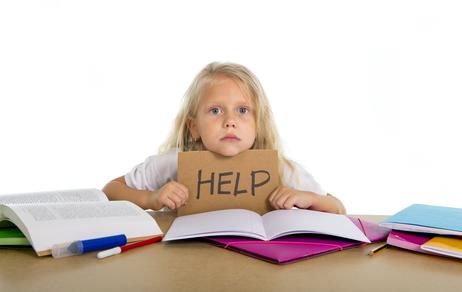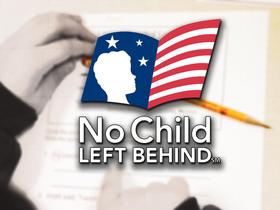Decades ago, the American formal education system was designed to meet the changing needs of the industrial revolution. What was once a time of growth has changed over the years and, with the current economic climate, that system is no longer able to meet modern needs. But what are the biggest failures of the American public education system, and how can they be remedied?
In this article, we’ll explore fifteen of the biggest failures affecting the American public education system today. We’ll also explore five of the biggest emerging trends in American education.
The Top 15 Failures in American Public Education
Policymakers are constantly fighting to make changes to the American public education system, and not all of them are beneficial. Over the years, there has been a great deal of back-and-forth that has left the public education system in shambles. Some of these problems are easy to identify and have been long-standing issues while others are new, brought about by advances in technology, changes in policy, and general change that happens with time.
Every story has two sides, and for every policy or program put into place, there are going to be proponents and critics. Below you’ll find an overview of some of the biggest issues facing the American public system as well as arguments from people on both sides of the issue.
This video examines the question of why public education is failing parents and students.
Here are the top 15 failures affecting the American public education system:
1. Deficits in government funding for schools.
Funding is always an issue for schools and is, in fact, one of the biggest issues facing the American public education system today. For more than 90% of K-12 schools, funding comes from state and local governments, largely generated by sales and income taxes. Research shows, however, that funding has not increased with need – many states are still issuing funding that is lower than it was before the Great Recession. Lower funding means fewer teachers, fewer programs, and diminished resources.
2. Decline in school safety.
There has been a string of high-profile mass shootings in American schools, resulting not only in dozens of deaths but many debates about school safety. In one poll, over 50% of teenagers said they were worried about the possibility of gun violence in school. Teachers all across the country are faced with the problem of figuring out how to prevent attacks and protect the lives of students and personnel. Some suggest special straining for teachers and concealed weapons might make schools safer while critics argue that more guns in schools could lead to more accidents and injuries.
3. Challenges with technology in education.
Today’s students have grown up using technology and have come to expect it in the classroom, but there are arguments about how large a role technology should play in education. Supporters suggest that technology creates the potential for more active student engagement and provides instant access to up-to-date resources while critics say it could be a distraction. While technology in the classroom certainly has its benefits, certain aspects of technology are challenging. For example, smartphones and easy access to technology have made it easier for students to cheat and can negatively impact learning.
This video discusses the worsening school funding crisis.
4. Controversy over charter schools and voucher programs.
Another hot topic in education today is school choice. Charter schools and school vouchers allow parents to choose options other than traditional public schools for their children. Charter schools are funded by a combination of private and public funds and operate outside the public school system. School vouchers allow parents to use public funds to send their child to a school of choice, including private schools. Critics of these schools suggest that charter schools and voucher programs siphon funds away from public schools that are already struggling financially.
5. Problems with the common core curriculum.
The Common Core State Standards were developed to specify exactly what students should know before graduating high school. It was developed in 2009 to promote educational equity across the country, holding all students to the same standardized testing requirements. Some see the problem as a federal intrusion into the state control of education and others say that it doesn’t allow for teacher innovation and flexibility with the learning process. Most states adopted the standards when they were introduced but more than a dozen have since repealed or revised them.
6. Decreased teacher salaries.
Teacher salaries are by no means impressive and, in most states, they have decreased steadily over the past few years. In fact, research shows that the average salary for public elementary and secondary school teachers dropped by nearly 5% between the 2009/10 school year and now. States like Oklahoma and Colorado experienced a 17% and 16% decrease – these states also saw massive teacher walkouts in 2018. There are, of course, some states where teacher salaries increased, and some teachers received a growth in benefits that may or may not be enough to balance out wages that are low overall.
7. Emphasis on standardized testing.
Along with Common Core, there has been an increased focus on standardized testing, especially during the No Child Left Behind years. Schools and teachers are judged based on student test scores which, many argue, is not a fair or accurate measure of efficacy. Many critics argue that standardized testing is one of the biggest problems in American education, suggesting that the pressure to produce high test scores leads to a teach-to-the-test approach and reduced focus on non-tested subjects like art.
8. Arguments about teacher tenure.
Tenure is designed to protect teachers from being fired for personal or political reasons – the school district must demonstrate just cause. In many states, tenure is granted to public school teachers who have consistently received satisfactory evaluations, though some states don’t award it at all. Supporters suggest that tenured teachers can advocate for students without having fears of reprisal while critics say that it makes it harder for school districts to dismiss ineffectual teachers. Some also suggest that tenure may encourage complacency, allowing teachers to put forth the minimal effort.
9. Bullying in schools.
Violence in schools is a rising issue and bullying is a key contributor. According to the National Center for Education Statistics, over 20% of students in grades 6 through 12 have been bullied either in school or on their way to/from school. This figure is actually down from 32% in 2007 but is still much too high. The challenge with these statistics is that many students who are bullied do NOT report it. Bullied students experience a wide range of physical, behavioral, and emotional problems that can impact not only their education but also their lives.
10. Growing problems with student poverty.
According to data from the National Center for Education Statistics, more than 50% of the public-school population in the United States was made up of low-income students. This is a significant increase from 38% in 2001. This is a nationwide problem with 40% of public-school students qualifying for free or reduced-price lunches in 40 states. In 18 of those states, student poverty rates were over 50%. Studies have shown that low-income students tend to perform lower than affluent students and family income shows a strong correlation with student achievement measured by standardized tests.
11. Schools are overcrowded.
In the 2011/12 school year, the average class size in American public schools was about 21 students in elementary school and almost 27 students in secondary school. Anecdotal reports, however, suggest that classrooms today have closer to 30, and in some cases, 40 students. Teachers and other proponents of smaller class sizes suggest that class size influences the quality of instruction with smaller class sizes have improved student outcomes. Critics say that the cost of limiting class sizes is a limiting factor and that it may not be worth it. In Florida, class sizes were capped in 2002 but a 2010 study showed no significant impact on test scores for students in grades 4 through 8.
12. Student mental health challenges.
Mental health is a growing concern in the United States and one that even affects school students. A 2018 study showed that nearly two-thirds of college students experienced overwhelming anxiety and anxiety has been reported in younger students as well. Even schools that are trying to make a difference face challenges. For example, the recommended ratio of students to counselors is one counselor for every 1,000 to 1,500 students but the U.S. college campus average is 1,737 to 1. Awareness of mental health issues is increasing, but there is still a stigma that prevents many students from seeking care.
13. Parents are not involved enough.
Teachers in public schools can only do so much to support their students. When the students go home for the day, the state of their home life can impact their development both personally and academically. In cases where parents lack higher education, they may not be able to provide the assistance students need to learn and to complete homework. Students in low-income families face additional challenges at home, though even middle- and upper-class families aren’t off the hook. In many families, parents are too career-focused and have little time to spend supporting their child’s education.
14. Too many schools are being closed.
Schools all over the country are closing their doors in numbers that are quite alarming. This only leads to an increase in issues with large class sizes and poor access to resources. It is easy for parents, teachers, and communities that are affected by closures to feel targeted even when school board members provide unbiased data. In some cases, closures cannot be prevented but they can be delayed and communities should consider other solutions or alternative uses for the school such as a community center or adult education center.
15. Lack of teacher innovation and outdated teaching methods.
The teaching methods used decades ago simply do not work for the modern student. One of the biggest things holding back the American public education system is a lack of teacher innovation, partially created by the enforcement of standardized testing and the Common Core curriculum. Unfortunately, the problem really needs to be addressed at the federal level with changes to policies that will result in a change within the public education system. America needs teachers who are better trained to meet the needs of their students and who are willing to speak up and facilitate change. Teachers are on the front lines and, without them speaking up, change is not possible.
Problems abound in the American education system, but growth and change are possible. Keep reading to learn about the top emerging trends in the nation’s public education.
The Top 5 Emerging Trends in Education
Though the American public education system certainly has its issues, it is by no means a lost cause. The only thing anyone can do is change with the times and there are a number of emerging trends in education that could be a step toward resolving some of the issues above.
Here is an overview of the top 5 emerging trends in American education:
- Increase in maker learning initiatives.
- Moving away from a letter grade system.
- Changing classroom approaches like flipped learning.
- The institution of micro-credentials.
- Growing concern for social and emotional development.
Now, let’s take a quick look at each of these trends.
1. Increase in maker learning initiatives.
In many schools, teaching is the focus when education should really be focused on student learning. Maker education allows students to follow their own interests and to test their own solutions for problems in a do-it-yourself approach to education. Students learn in collaborative spaces where they identify problems, create inventions, make prototypes, and keep working until they have the final result that works. There is little hard evidence on the trend as of yet, but it is growing quickly.
2. Moving away from a letter grade system.
Student assessment is necessary to test the efficacy of teaching strategies and curriculum – it is also a good way to measure individual student growth and success. For many years, letter grades have been the primary method of student assessment but that is changing. Leaders in education currently feel that the traditional letter grade model is not a sufficient measure of the skills most highly valued in the modern workforce – skills like creativity and problem-solving.
In 2017, the Mastery Transcript Consortium was formed and includes over 150 private high schools. These schools have adopted a digital system that provides qualitative descriptions of student learning and samples of work instead of the grade-based transcript system. Public schools are quickly adopting the trend as well in a nationwide shift toward mastery-based or competency-based learning.
3. Changing classroom approaches like flipped learning.
The traditional model of teaching places the teacher in front of the class giving a lecture, followed by students working at home on assignments to enhance their understanding of the subject. Flipped learning involves students watching videos or relevant coursework prior to class, and using class time to expand on the material through group discussions or collaborative projects. Flipped learning allows students to control their learning pace and encourages students to learn from each other, exploring subjects more deeply than they otherwise might.
4. The institution of micro-credentials.
This trend in higher education is a departure from traditional college degrees that require years of study over a multi-year span. Micro-credentials, rather, are also known as digital badges or nano degrees that demonstrate knowledge or skill in a given area and are earned through short, targeted educational offerings. About 20% of higher education institutions offer some kind of alternative credentialing system, often partnering with third-party learning providers.
5. Growing concern for social and emotional development.
Traditional education is focused on academics but there is a movement toward nurturing the whole study called social-emotional learning (SEL). This movement is based on the growing consensus that schools have a responsibility to protect and develop students’ social and emotional development in addition to their cognitive skills. SEL focuses on helping students manage their emotions, show empathy, set goals, identify their strengths and make responsible decisions. Research on SEL shows a reduction in anti-social behavior and an improvement in academic achievement and long-term health.
The United States is a giant country with a huge population, making it difficult to standardize education or make improvements across the board. Though there are many problems with the American public education system, there are also many people (including legislators) who are dedicated to making positive changes that could benefit the future students of this country.
Questions? Contact us on Facebook. @publicschoolreview















